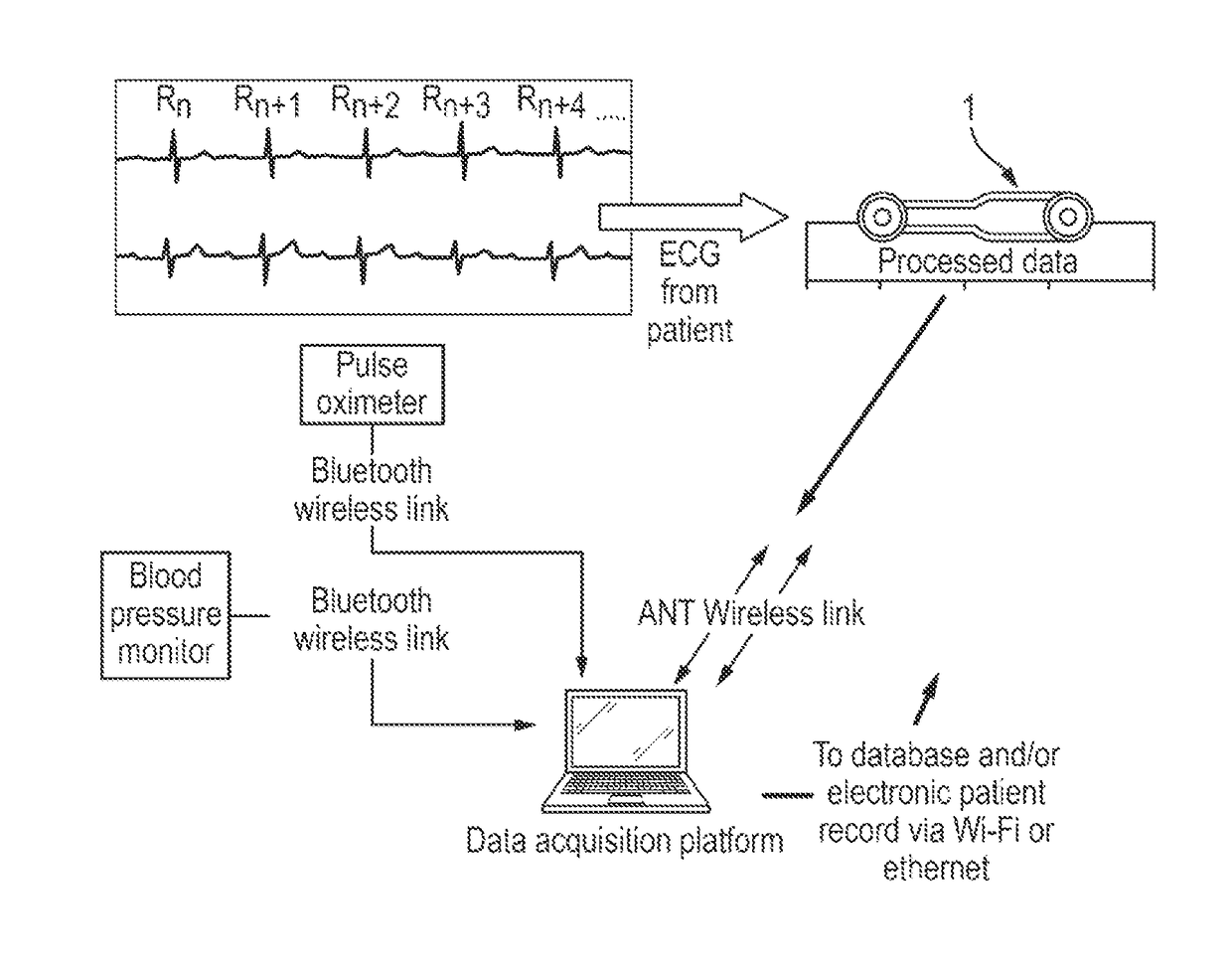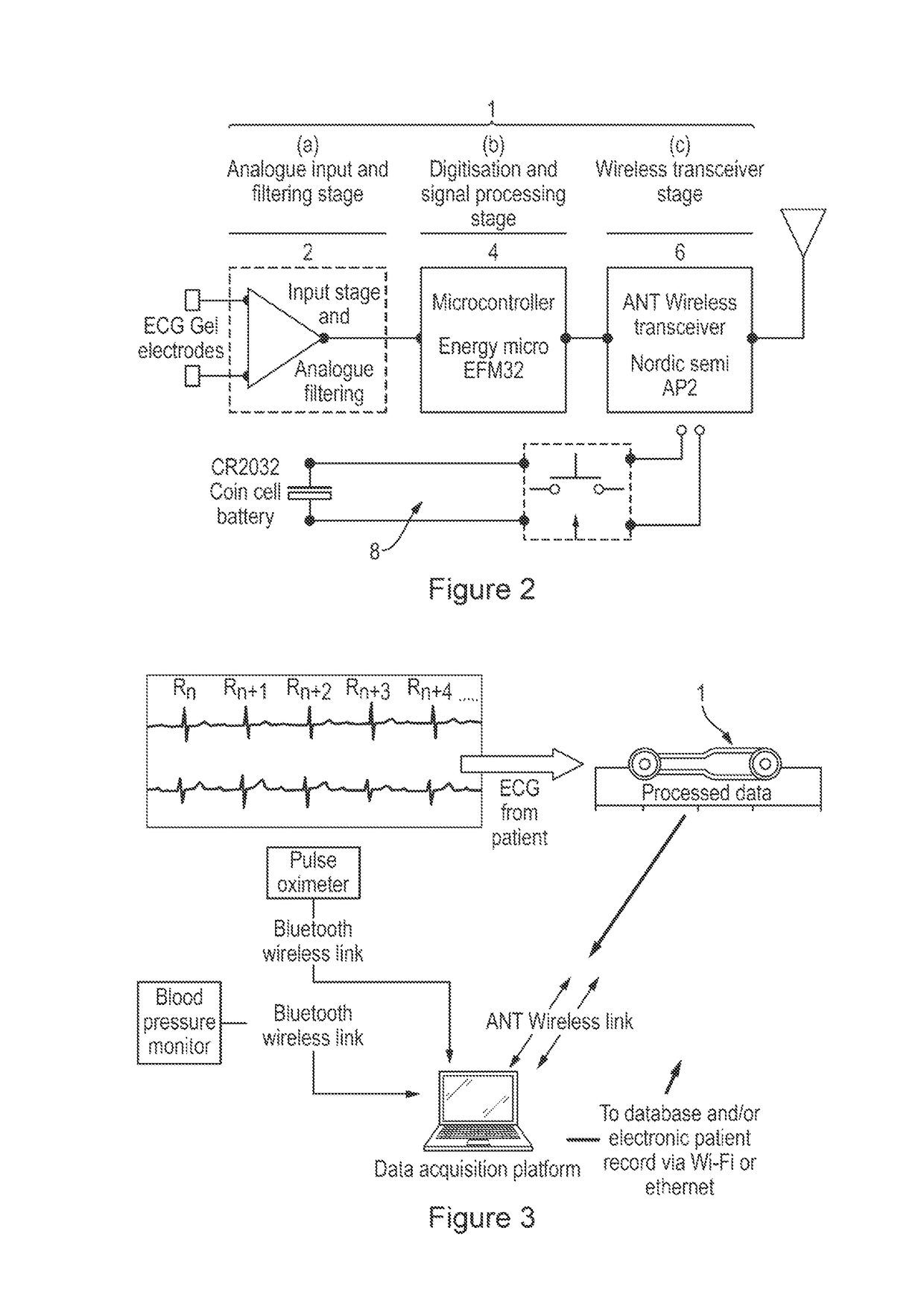Health monitoring
- Summary
- Abstract
- Description
- Claims
- Application Information
AI Technical Summary
Benefits of technology
Problems solved by technology
Method used
Image
Examples
Embodiment Construction
[0074]In FIG. 2 there is seen a schematic layout of the main electrical components of a cardiac monitoring device 1. The device 1 comprises ECG measuring means 2 including a pair of ECG gel electrodes connected to an input stage amplifier. An analogue ECG signal may be amplified and filtered at the input stage. For example, the millivolt level signal from the ECG electrodes may be amplified while 50 / 60 Hz induced noise and higher frequency muscle noise is filtered out. The input stage 2 is designed to reduce the effects of motion artefacts and ensures that the device 1 is suitable for ambulatory as well as stationary subjects. The construction of the device 1 is described below with respect to FIGS. 5-8.
[0075]The amplified and filtered ECGs signal are supplied from the measuring means 2 to a data processing means 4 comprising a data processor including a microcontroller such as the EFM32 from Energy Micro AS. The microcontroller is designed for very low power operation. The measurin...
PUM
 Login to View More
Login to View More Abstract
Description
Claims
Application Information
 Login to View More
Login to View More - R&D
- Intellectual Property
- Life Sciences
- Materials
- Tech Scout
- Unparalleled Data Quality
- Higher Quality Content
- 60% Fewer Hallucinations
Browse by: Latest US Patents, China's latest patents, Technical Efficacy Thesaurus, Application Domain, Technology Topic, Popular Technical Reports.
© 2025 PatSnap. All rights reserved.Legal|Privacy policy|Modern Slavery Act Transparency Statement|Sitemap|About US| Contact US: help@patsnap.com



